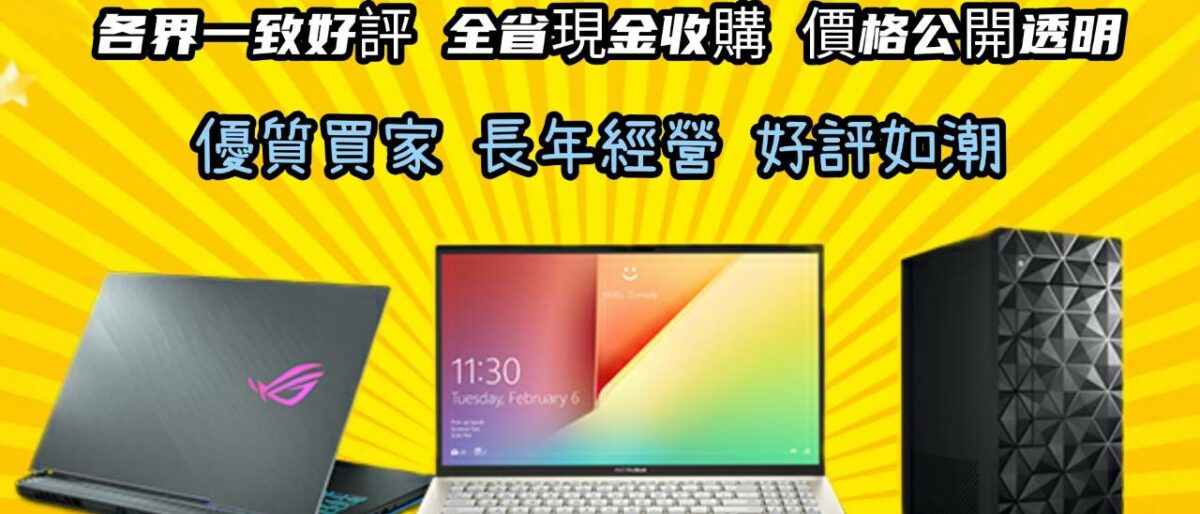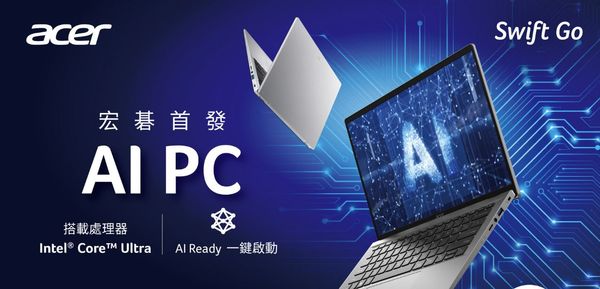現金收購 筆電收購 收購ASUS筆電 收購ROG電競筆電 收購ACER筆電 收購Msi電競筆電 收購微軟SUR 看全文

我們專業經營各項3C高價回收,收購電競筆電,文書筆電,輕薄筆 電,MSI,ASUS,ACER,HP,Razer,GIGABYBE,Microsoft,,多通路多管道,非坊間垃圾回收價,價格不怕您比較,歡迎企業戶汰舊換新,續約販賣,分期換現,電競筆電, 二手汰舊,手機,筆電,相機,鏡頭,空拍機
現金筆電收購
esents tremendous opportunities to introduce new hardware and software features to the tried-and-true PC platform, but the definition of an AI PC has been a bit elusive. Numerous companies, including Intel, AMD, Apple, and soon Qualcomm with its X Elite chips, have developed silicon with purpose-built AI accelerators residing on-chip alongside the standard CPU and GPU cores. However, each has its own take on what constitutes an AI PC.
Microsoft’s and Intel’s new co-developed definition states that an AI PC will come with a Neural Processing Unit (NPU), CPU, and GPU that support Microsoft’s Copilot and come with a physical Copilot key directly on the keyboard that replaces the second Windows key on the right side of the keyboard. Copilot is an AI chatbot powered by an LLM that is currently being rolled into newer versions of Windows 11. It is currently powered by cloud-based services, but the company reportedly plans to enable local processing to boost performance and responsiveness. This definition means that the existing Meteor Lake and Ryzen laptops that have shipped without a Copilot key actually don’t meet Microsoft’s official criteria, though we expect Microsoft’s new definition to spur nearly universal adoption of the key.
While Intel and Microsoft are now promoting this jointly developed definition of an AI PC, Intel itself has a simpler definition that says it requires a CPU, GPU, and NPU, each with its own AI-specific acceleration capabilities. Intel envisions shuffling AI workloads between these three units based on the type of compute needed, with the NPU providing exceptional power efficiency for lower-intensity AI workloads like photo, audio, and video processing while delivering faster response times than cloud-based services, thus boosting battery life and performance while ensuring data privacy by keeping data on the local machine. This also frees the CPU and GPU for other tasks. The GPU and CPU will step in for heavier AI tasks, a must as having multiple AI models running concurrently could overwhelm the comparatively limited NPU. If needed, the NPU and GPU can even run an LLM in tandem.
AI models also have a voracious appetite for memory capacity and speed, with the former enabling larger, more accurate models while the latter delivers more performance. AI models come in all shapes and sizes, and Intel says that memory capacity will become a key challenge when running LLMs, with 16GB being required in some workloads, and even 32GB may be necessary depending on the types of models used.
Naturally, that could add quite a bit of cost, particularly in laptops, but Microsoft has stopped short of defining a minimum memory requirement yet. Naturally, it will continue to work through different configuration options with OEMs. The goalposts will be different for consumer-class hardware as opposed to workstations and enterprise gear, but we should expect to see more DRAM on entry-level AI PCs than the standard fare — we may finally bid adieu to 8GB laptops.(Image credit: Intel)Intel says that AI will enable a host of new features, but many of the new use cases are undefined because we remain in the early days of AI adoption. Chatbots and personal assistants trained locally on users’ data are a logical starting point, and Nvidia’s Chat with RTX and AMD’s chatbot alternative are already out there, but AI models running on the NPU can also make better use of the existing hardware and sensors present on the PC.
For instance, coupling gaze detection with power-saving features in OLED panels can enable lower refresh rates when acceptable, or switch the screen off when the user leaves the PC, thus saving battery life. Video conferencing also benefits from techniques like background segmentation, and moving that workload from the CPU to the NPU can save up to 2.5W. That doesn’t sound like much, but Intel says it can result in an extra hour of battery life in some cases.
Other uses include eye gaze correction, auto-framing, background blurring, background noise reduction, audio transcription, and meeting notes, some of which are being built to run on the NPU with direct support from companies like Zoom, Webex, and Google Meet, among others. Companies are already working on coding assistants that learn from your own code base, and others are developing Retrieval-Augmented Generation (RAG) LLMs that can be trained on the users’ data, which is then used as a database to answer search queries, thus providing more specific and accurate information.
Other workloads include image generation along with audio and video editing, such as the features being worked into the Adobe Creative Cloud software suite. Security is also a big focus, with AI-powered anti-phishing software already in the works, for instance. Intel’s own engineers have also developed a sign-language-to-text application that uses video detection to translate sign language, showing that there are many unthought-of applications that can deliver incredible benefits to users.The Core Ultra Meteor Lake Dev Kit(Image credit: Intel)The Intel dev kit consists of an 現金筆電收購asus NUC Pro 14 with a Core Ultra Meteor Lake processor, but Intel hasn’t shared the detailed specs yet. We do know that the systems will come in varying form factors. Every system will also come with a pre-loaded software stack, programming tools, compilers, and the drivers needed to get up and running.
Installed tools include Cmake, Python, and Open Vino, among others. Intel also supports ONNX, DirectML, and WebNN, with more coming. Intel’s OpenVino model zoo currently has over 280 open-source and optimized pre-trained models. It also has 173 for ONNX and 150 models on Hugging Face, and the most popular models have over 300,000 downloads per month.Expanding the EcosystemImage 1 of 4(Image credit: Intel)(Image credit: Intel)(Image credit: Intel)(Image credit: Intel)Intel is already working with its top 100 ISVs, like Zoom, Adobe and Autodesk, to integrate AI acceleration into their applications. Now it wants to broaden its developer base to smaller software and hardware developers — even those who work independently.
To that end, Intel will provide developers with its new dev kit at the conferences it has scheduled around the globe, with the first round of developer kits being handed out here in Taipei. Intel will also make dev kits available for those who can’t attend the events, but it hasn’t yet started that part of the program due to varying restrictions in different countries and other logistical challenges.
These kits will be available at a subsidized cost, meaning Intel will provide a deep discount, but the company hasn’t shared details on pricing yet. There are also plans to give developers access to dev kits based on Intel’s future platforms.
Aside from providing hardware to the larger dev houses, Intel is also planning to seed dev kits to universities to engage with computer science departments. Intel has a knowledge center with training videos, documentation, collateral, and even sample code on its website to support the dev community.
Intel is engaging with Independent Hardware Vendors (IHVs) that will develop the next wave of devices for AI PCs. The company offers 24/7 access to Intel’s testing and process resources, along with early reference hardware, through its Open Labs initiative in the US, China, and Taiwan. Intel already has 100+ IHVs that have developed 200 components during the pilot phase.
ISVs and IHVs interested in joining Intel’s PC Acceleration Program can join via the webpage. We’re here at the event and will follow up with updates as needed.Stay On the Cutting Edge: Get the Tom’s Hardware NewsletterGet Tom’s Hardware’s best news and in-depth reviews, straight to your inbox.Contact me with news and offers from other Future brandsReceive email from us on behalf of our trusted partners or sponsorsBy submitting your information you agree to the Terms & Conditions and Privacy Policy and are aged 16 or over.
Paul AlcornSocial Links NavigationManaging Editor: News and Emerging TechPaul Alcorn is the Managing Editor: News and Emerging Tech for Tom’s Hardware US. He also writes news and reviews on CPUs, storage, and enterprise hardware.
See more CPUs News
More about cpusDell hints at Nvidia-made chips for Windows AI PCs as soon as next yearSnapdragon X Elite Dev Kit is an $899 mini PC — meant to develop for Windows on ArmLatestMSI issues new Claw BIOS update, claims to outperform ROG Ally in top 100 most popular Steam gamesSee more latest ►
TOPICS
AI PC
Meteor Lake
See all comments (10)
10 Comments
Comment from the forums
hotaru251
So by their own slide they basically say only intel PC’s can be ai pcs? As doesn’t say a system w/ this stuff but specifically an intel one.
Reply
usertests
hotaru251 said:So by their own slide they basically say only intel PC’s can be ai pcs? As doesn’t say a system w/ this stuff but specifically an intel one.AMD and Qualcomm can meet these requirements.
On Intel’s side, maybe Intel Core Ultra is the only brand that qualifies (for now).
Reply
-Fran-
So Microsoft ready to screw AMD yet again? XD
AMD, come on… Haven’t you ever heard of “fool me once…”?
Help Valve grow SteamOS and Microsoft will come begging your way.
Regards.
Reply
cknobman
Intel better start focusing on ditching x86 or at least diversifying and limiting its use cases.
In anything other than the most demanding workloads ARM is taking over fast.
So Intels AI will be irrelevant to most regular consumers who are buying ARM based PC’s.
Reply
NeoMorpheus
-Fran- said:So Microsoft ready to screw AMD yet again? XD
AMD, come on… Haven’t you ever heard of “fool me once…”?
Help Valve grow SteamOS and Microsoft will come begging your way.
Regards.Came here just to say the same thing.
I honestly thing that MS is waiting for intel to have a better gpu so they can dump AMD on the next Xbox.
AMD needs to stop being nice and start being more selfish.
Reply
usertests
If you guys are not joking and are taking the Intel marketing slide at face value, then you can’t be saved.
Reply
TerryLaze
cknobman said:Intel better start focusing on ditching x86 or at least diversifying and limiting its use cases.
In anything other than the most demanding workloads ARM is taking over fast.
So Intels AI will be irrelevant to most regular consumers who are buying ARM based PC’s.ARM has been “taking over fast” since the 60ies…
Also I don’t know if you were sleeping the last years but miniPCs and handhelds with x86 have practically flooded the market, so x86 is taking over a good chunk of what used to be an arm only domain.
Reply
Roland Of Gilead
Would it be possible to have an NPU on an add in card like PCIE to enable it’s use on those older

▲ACER Swift Go。(圖/燦坤)
記者陳俐穎/綜合報導
真AI筆電重磅來襲!隨著英特爾最新款Core Ultra處理器發表,首創內建NPU以更省電方式提供低功耗、高性能的AI推論處理能力,體現個人創意精彩輕鬆生成、沉浸式影音體驗、並大幅提升工作效能,同時確保個資資安防護。新掀起的這場AI熱潮正推展到終端消費裝置應用上,驅動電腦與筆電換機潮,同時也是宣告消費性AI時代正式來臨。
展望2024 AI PC元年,各家筆電大廠牌早早鎖定AI商機,率先由Acer、現金筆電收購asus和MSI三大品牌領頭推出第一波搭載Core Ultra處理器的AI筆電,3C通路燦坤(2430),宣布正式發售6款全新上市Core Ultra首發AI筆電,12月24日前加碼歲末歡樂抽活動,凡購買Intel EVO認證機種就送羅技靜音滑鼠,再抽限量LG view可攜式螢幕,選購指定H版處理器EVO筆電加碼抽XGIMI HALO+行動智慧輕劇院。
先前市場多以生成式AI軟體服務為主,如同微軟在Windows 11啟用的Copilot,塑造出導入AI模型的語音助理。此次英特爾Core Ultra系列是處理器產品的一次顛覆性革新,讓AI應用導入從軟體面延展到硬體規格上,使用筆電能發揮更進階效能表現來執行各種圖像、文字及程式等生成式AI應用。現行硬體規格再提升與內建NPU神經單元晶片,更為未來Windows12 發布和Copilot協作預做準備。
國內外各市調機構對於未來AI PC將陸續帶來換機潮,市場樂觀預估支援AI電腦產品有望逐漸成為未來主流,燦坤表示,生成式AI越來越普遍應用,AI PC恰如其份扮演個人智慧助理,消費者對Core Ultra賦能的AI筆電所能帶來的生產力提升與個人創意展現抱有高度期待,關鍵字都在於體驗創造需求。
Acer首發SwiftGo系列AI筆電,無痛一鍵下載穩定渲染插件(Stable Diffusion) ,簡單文字輸入,就能精彩展現個人無限創意;更透過智能降噪和智能純音,體現沉浸式影音娛樂享受。MSI首發Prestige系列AI筆電,強悍軍規等級,990公克極致輕薄,更搭載 WiFi 7模組,提高更加流暢畫質影片傳輸。現金筆電收購asus首發ZenBook系列AI筆電,則推出OLED 螢幕3K 120HZ,精準驚艷顯色,Harman/Kardon音效,極致沉浸式影音體現。
現金筆電收購 現金筆電收購